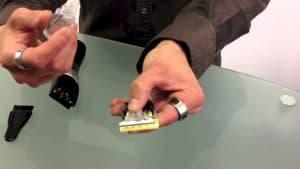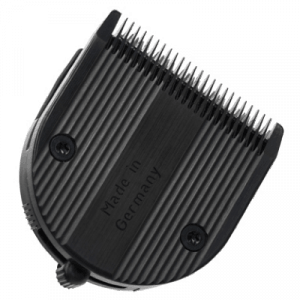After you decide to buy a pair of clippers and take on grooming yourself, you are faced with choosing blades. This is where most people give up and just take their dog to the groomers again. But, if you’re determined, learning can be fun.
What if you have already bought clippers?
Not to worry, many different brands produce a huge variety of clipper blades. There is no one size fits all though so do be aware of what brand your clippers are before you buy any new clipper blades for it.
How do clipper blades work?
Whether they are steel, ceramic, fine-toothed or skip toothed they all use the same function to provide quick cuts through your dog’s fur or hair. They run through hair eliminating the excess of the size of the clipper, leaving a clean trim.
So, what are the different types of blades? This you should take into consideration with the breeds you will be grooming. Keep in mind that having multiple dogs may mean having a variety of blades on hand. The choice between blade type and material can make grooming a very quick and easy experience for both you and your pup.
Fine or skip toothed blades?
A fine tooth blade, as you might have guessed, works best for breeds with fine or softer hair. We see this as a primary option for small and fluffy breeds. When you’re looking at clipper blades you may often see an “F” after the size. This is the indicator of a fine-toothed blade.
Now, skip tooth blades are more common and usually any size you pick up will initially be a skip toothed blade. You can also visually see the “steps” between the teeth as they reach over the blade itself. A skip toothed blade is great for a natural look.
The natural look you can achieve with a skip toothed blade is seen most commonly in thick haired, larger breeds. A German Shepherd coat is often cleaned up regularly with a large, skip toothed blade. If you have a skip toothed blade on hand you can also use it to finish a cut you did with a fine-toothed blade. This will create a smoother and less harsh look.

Ceramic or steel material?
Either claim to have its benefits although neither has a lot of proof to back up these claims. Stainless steel is rumored to keep its sharp edge longer. This means easier cutting for you! There is also a claim that the carbon infusion in the metal prevents rust and offers less resistance.
Although the benefit claims of stainless steel are pretty fantastic, the ceramic option is one for consideration. Ceramic blades claim to have tempering that helps fight against bacteria growth. As well as the buildup of mold or mildew which can be a death sentence for blades and if you’re not careful can make your pup very sick.
What is our recommendation here? Well, stainless steel blades are often easier to find, and more cost-conscious. Keep a stainless steel blade dry, and clean thoroughly after each use.
It is about more than just a blade
If you’ve purchased a set of clippers it may seem like everything in the package sets you up for success. Well, maybe not. If you’re new to grooming, you should review safety tools like clipper combs for your blades. You may also need to do a little research to find out what clipper sizes work best.
As an overarching rule in grooming, anything to do with your clipper should cater to the breed and style. This means when purchasing your blades you should be aware of what type of hair you will be cutting. If you choose to work with combs you should ensure that the blades you have purchased have comb attachments available.
The last thing you want to do is get ready to groom and be too nervous. Then you find out that there isn’t any clip or snap-on attachments for the blades you have. This would mean buying a new set of blades and the attachments you needed.


